Mysterious ‘Las Labradas’ Petroglyphs With Roots In The Pre-Columbian Times Of Mexico
A. Sutherland - AncientPages.com - Sinaloa's rocks covered with a variety of figures are true history rocks, a legacy of mythological traditions with roots in the Pre-columbian times of North America.
Little is known of the Sinaloa people and their early history. However, ancient carvings and legends represent a legacy of these people. Las Labradas petroglyphs' area is a very ancient and sacred site to the coastal Indians of the area.

A large number of beautiful petroglyphs known as 'las labradas' have been found on a beach in the vicinity of Barras de Piaxtla, a small fishing village, north of Mazatlan in the Mexican state of Sinaloa.
Many of the carvings suffered significant damage due to weather and water over the centuries.
Remarkably, natural erosion hasn't been destructive enough to erase all the testimonies left by the ancients for future generations.

It's still quite easy to recognize many anthropomorphic, zoomorphic or geometric forms that represent solar phenomena expressed with lines, dots, ancient spirals, and figures.
In 1949 engineer Gonzalo Ortiz de Zárate arrived in Culiacán. Of Spanish origin, he came to land in Sinaloa to work in Eureka, a construction company that would be in charge, at that time, to build the irrigation canals of the Sanalona dam.
Accidentally, on one of the beaches of the Sinaloan Pacific, he stumbled upon one of his best finds: "more than 300 meters of rocks of volcanic origin piled at the foot of the beach with a huge number of engravings: evocations of the sun through concentric circles, flowers, animals, human figures... total, almost 650 different prints. The beach, already known then as “las labradas”, was in the set of small inlets near the mouth of the Piaxtla river, known as “Barras de Piaxtla,” as wrote Professor Juan González Morfín, Universidad Panamerican, Mexico.
Many cultures left similar carvings around the world and Sinaloa's prehistoric region is one of them. The ancient carvings were left by the groups that belonged to Aztatlán culture, Sinaloa, México, and living along the rivers of Sinaloa.

Perhaps these people also recorded their prehistoric testimonies on other rocks discovered in several places in Sinaloa.
The Aztatlán culture was one of the major cultures that developed during the late pre-Hispanic northwest Mesoamerica (900 to 1350 AD). Only a few archaeological excavations were carried out over the last fifty years in this region. However, there is some evidence that the Aztatlán culture had a significant influence on social changes in northern Mexico and the American Southwest.
In 1942, Manuel Bonilla (1867 - 1957), a scholar and one of few, who described intriguing petroglyphs of Sinaloa, in his book "De Atlatlán a México" (From Atlatlán to Mexico) said that these relics constitute a very important key to the history of prehistoric peoples of Mexico.
Written by – A. Sutherland - AncientPages.com Senior Staff Writer
Copyright © AncientPages.com All rights reserved. This material may not be published, broadcast, rewritten or redistributed in whole or part without the express written permission of AncientPages.com
Expand for referencesMore From Ancient Pages
-
 On This Day In History: Amelia Earhart’s First Solo Ocean Flight – On Jan 11, 1935
News | Jan 11, 2017
On This Day In History: Amelia Earhart’s First Solo Ocean Flight – On Jan 11, 1935
News | Jan 11, 2017 -
 Prometheus ‘Fire Bringer’ – Hero Stealing Fire From Gods Giving It To Mortals
Featured Stories | Sep 5, 2018
Prometheus ‘Fire Bringer’ – Hero Stealing Fire From Gods Giving It To Mortals
Featured Stories | Sep 5, 2018 -
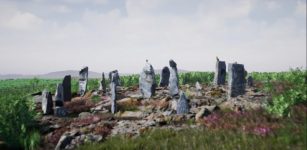 Star-Shaped Magnetic Anomaly At Hidden Stone Circle In The Outer Hebrides Gives New Insight Into Ancient Beliefs
Archaeology | Jan 2, 2020
Star-Shaped Magnetic Anomaly At Hidden Stone Circle In The Outer Hebrides Gives New Insight Into Ancient Beliefs
Archaeology | Jan 2, 2020 -
 What Happened To The Homo Sapiens In The Thar Desert When They Encountered The Indian Monsoon System
Archaeology | Oct 5, 2021
What Happened To The Homo Sapiens In The Thar Desert When They Encountered The Indian Monsoon System
Archaeology | Oct 5, 2021 -
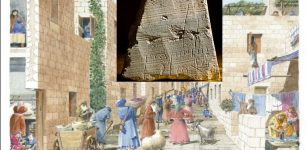 Who Was “Shimon”, Whose Name Appears On A 2,000-Year-old Hebrew Inscription?
Archaeology | May 20, 2023
Who Was “Shimon”, Whose Name Appears On A 2,000-Year-old Hebrew Inscription?
Archaeology | May 20, 2023 -
 What Is The Avoidance Custom Of The Amish People In Pennsylvania?
Ancient History Facts | Jul 29, 2019
What Is The Avoidance Custom Of The Amish People In Pennsylvania?
Ancient History Facts | Jul 29, 2019 -
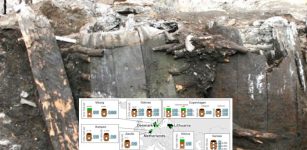 DNA In Viking Poop Sheds New Light On 55,000-Year-Old Relationship Between Gut Companions
Archaeology | Sep 5, 2022
DNA In Viking Poop Sheds New Light On 55,000-Year-Old Relationship Between Gut Companions
Archaeology | Sep 5, 2022 -
 3,000-Year-Old Geoglyphs May Depict The Heavens
Archaeology | Jun 25, 2018
3,000-Year-Old Geoglyphs May Depict The Heavens
Archaeology | Jun 25, 2018 -
 Oxygen Spike Coincided With Ancient Global Extinction
Archaeology | Sep 3, 2021
Oxygen Spike Coincided With Ancient Global Extinction
Archaeology | Sep 3, 2021 -
 Werewolf – Ancient Worldwide Belief In Terrible Curse
Myths & Legends | Jun 28, 2021
Werewolf – Ancient Worldwide Belief In Terrible Curse
Myths & Legends | Jun 28, 2021 -
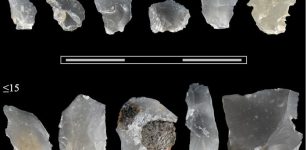 Scientists Unravel Why Humans Used Tiny Flakes 300,000 Years Ago
Archaeology | Dec 15, 2022
Scientists Unravel Why Humans Used Tiny Flakes 300,000 Years Ago
Archaeology | Dec 15, 2022 -
 Secrets Of Nanomaterial From The Middle Ages Examined By Scientists
Archaeology | Oct 11, 2022
Secrets Of Nanomaterial From The Middle Ages Examined By Scientists
Archaeology | Oct 11, 2022 -
 Story Of Uncle Sam – Symbol Of The United States Government
Ancient Symbols | Apr 24, 2017
Story Of Uncle Sam – Symbol Of The United States Government
Ancient Symbols | Apr 24, 2017 -
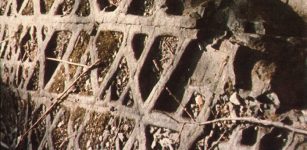 America’s Mysterious Waffle Rock Formation
Featured Stories | Apr 15, 2014
America’s Mysterious Waffle Rock Formation
Featured Stories | Apr 15, 2014 -
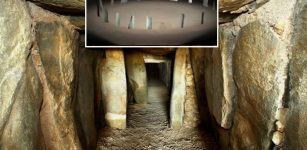 Dolmen de Soto: Unique Millennia-Old Underground Structure Remains A Puzzling Enigma
Featured Stories | Feb 10, 2022
Dolmen de Soto: Unique Millennia-Old Underground Structure Remains A Puzzling Enigma
Featured Stories | Feb 10, 2022 -
 On This Day In History: Mount Fuji Erupted – On Dec 16, 1707
News | Dec 16, 2016
On This Day In History: Mount Fuji Erupted – On Dec 16, 1707
News | Dec 16, 2016 -
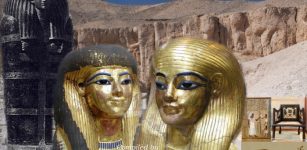 Amazing Tomb Of Yuya And Tjuyu Filled With Ancient Treasures In The Valley Of The Kings
Featured Stories | Jun 2, 2021
Amazing Tomb Of Yuya And Tjuyu Filled With Ancient Treasures In The Valley Of The Kings
Featured Stories | Jun 2, 2021 -
 Rosicrucians’ Secret Knowledge Of Atlantis, Pyramids And Extraterrestrial Visitations
Ancient Mysteries | Apr 17, 2017
Rosicrucians’ Secret Knowledge Of Atlantis, Pyramids And Extraterrestrial Visitations
Ancient Mysteries | Apr 17, 2017 -
 Why Was The World’s Oldest Known Rune Stone At The Svingerud Grave Deliberately Broken Into Pieces?
Archaeology | Feb 3, 2025
Why Was The World’s Oldest Known Rune Stone At The Svingerud Grave Deliberately Broken Into Pieces?
Archaeology | Feb 3, 2025 -
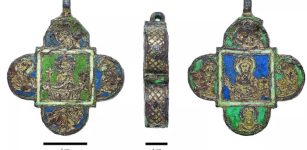 Bone Fragments Found Inside Mysterious Medieval Pendant
Archaeology | Jan 5, 2023
Bone Fragments Found Inside Mysterious Medieval Pendant
Archaeology | Jan 5, 2023
